Telegram vs. WhatsApp: Which Messaging App to Choose
Analyzing the differences between two popular platforms.

When choosing a messaging app for communication, both personal and business for personal or business communication, many of us have the following question in mind: Telegram or WhatsApp? At stake are everyday convenience, customer support quality, and sales conversion rates.
However, there’s no need to toss a coin. In this article, we will cover the key differences a user faces when choosing WhatsApp or Telegram from both a regular user’s and a business perspective. We will also highlight the best tool for various use cases and show how to use WhatsApp and Telegram together in a single app without compromise.
Telegram or WhatsApp: Key Differences
WhatsApp is about reach, simplicity, and chats with default end-to-end encryption, while Telegram is about multi-device support and a rich set of features. This is how things are if we make it as brief as possible.
For everyday communication, WhatsApp has the upper hand, since all of your friends and customers are already there. Telegram provides tools for building large-scale communities with Groups and Channels, creating bots and mini apps, as well as the ability to seamlessly switch between multiple mobile and desktop devices. "Choosing between them is a question of priorities. If you want a simple, reliable app that everyone you know already uses, WhatsApp is the default. If you value features, customization, and a platform that feels more like social media, you’re in Telegram’s camp", argues Andrey Palagin, Head of Marketing at Ummico.
Telegram or WhatsApp: business perspective
Every modern business needs to be where its customers are — at the moment, that means messaging apps and social media. And when it comes to choosing a platform to focus your customer communication and marketing efforts, the choice is often between Telegram and WhatsApp.
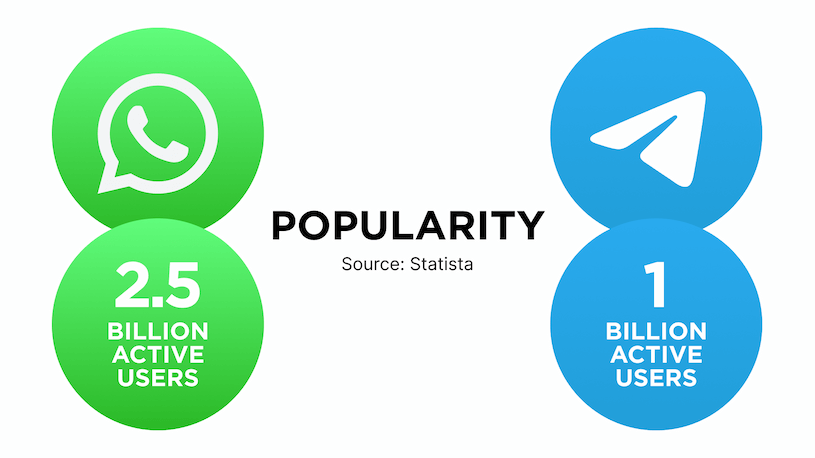
The advantages of WhatsApp for brands
The strengths of WhatsApp in a business context come from its global scale and user-friendly simplicity.
- Unmatched familiarity & reach. With over 2.5 billion users, it's nearly a given that your clients use WhatsApp. This automatically increases engagement and reduces the barrier to installing a new app and learning the ropes.
- Built-in encryption. By default, all calls and conversations use end-to-end encryption. Because users are aware of and appreciate this, WhatsApp has a solid reputation for privacy and security.
- Toolkit for small businesses. With useful features like product catalogs, quick replies, and labels, the free WhatsApp Business app makes it simple for small teams to get started and set up a digital shop.
- Scalability. For more complex requirements like multi-agent support, CRM integrations, and detailed analytics, larger companies can utilize the WhatsApp Business API.
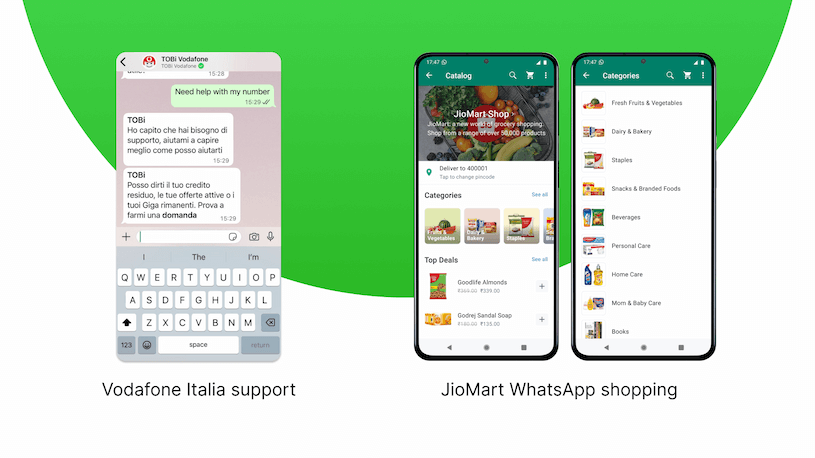
Potential drawbacks of WhatsApp
Despite its reach, there are some clear cons of WhatsApp to consider.
- Costs and messaging restrictions. Proactive outreach requires WhatsApp-approved message templates, paired with a conversation-based pricing model that can add cost and complexity.
- Limited broadcasting. WhatsApp Channels are strictly one-way, while Groups remain capped at much smaller sizes than Telegram’s.
- Operational challenges for teams. The free WhatsApp Business app isn’t team-friendly. Handling conversations across multiple agents can become troublesome without a unified inbox tool.
The benefits of Telegram for business
The benefits of Telegram are centered around its flexibility, community-building features, and tools for developers.
- Massive community features. Telegram’s Groups support up to 200,000 members, and Channels allow unlimited subscribers. This makes it especially powerful for brands focusing on community-led growth.
- Automation & bots. Its publicly documented Bot API enables Telegram developers to build advanced automations without restrictions such as pre-approvals or per-message fees.
- Cloud-based solutions. Storing chats in the cloud enables seamless multi-device access, powerful search, and efficient desktop functionality—ideal for operationally heavy teams.
- Discoverability. Publicly searchable Channels make Telegram excellent for content-heavy marketing strategies.
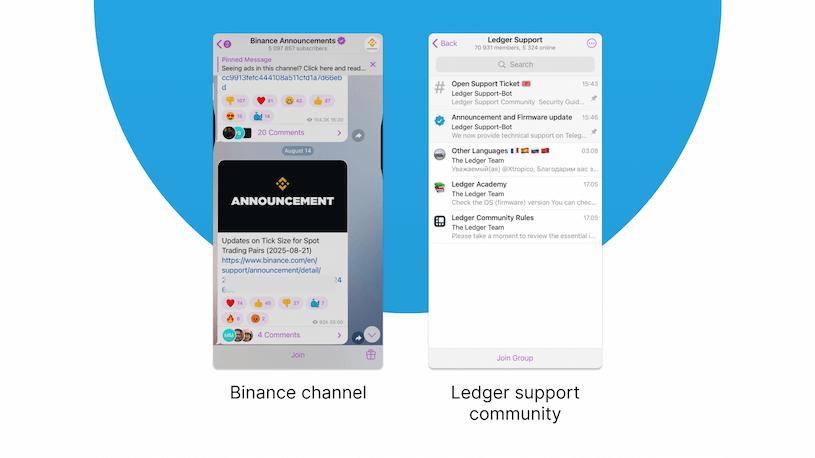
Potential disadvantages of Telegram
It is also worth noting some key drawbacks of using Telegram for businesses.
- Encryption isn't default. Unlike WhatsApp, Telegram’s regular chats are stored in the cloud and not end-to-end encrypted by default. Full E2EE encryption is limited to device-specific “Secret Chats.”
- Uneven market penetration. While highly popular in regions such as Eastern Europe, India, and parts of South America, Telegram loses to WhatsApp in other major markets.
- Compliance complexity. Data storage in Telegram’s cloud can pose extra challenges for sectors with strict record-keeping and regulatory requirements.
Which platform is right for your business depends on what the company is striving for at the moment. If the company is after maximum reach and wants to manage simple, predictable customer conversations, WhatsApp is the most suitable platform. Telegram provides unparalleled flexibility and scale if the brand focuses on building communities, broadcasting to a wide audience, and leveraging powerful automation.
| Telegram | ||
|---|---|---|
| Audience | Maximum global reach (2.5B+ users) | Broad, growing audience (1B+ users). |
| Community & broadcasting | Groups are limited to 1,024 members. Channels are one-way broadcasts. | Supergroups hold up to 200,000 members. Unlimited subscribers in Channels. |
| Automation & API | Via official Business API. Requires approved templates and has conversation-based pricing. | Open and flexible API offers freedom for custom bots and integrations. |
| Security | All chats and calls are end-to-end encrypted by default. | E2EE is enabled for Secret Chats only. |
| File sharing | Up to 2GB per file. Media is stored on the user's device or in their cloud backup. | Up to 2GB per file (4GB with Premium). Files are stored in unlimited cloud storage. |
| Multi-device | Requires the primary phone to be linked. | Independent access across all devices (desktop, web, mobile). |
| Learning curve | Extremely low | Slightly higher. Leveraging advanced features requires some learning. |
Telegram or WhatsApp: what to choose for personal use
For personal communication, the choice between WhatsApp and Telegram often comes down to choosing between universal reach and advanced functionality. WhatsApp is the default app for staying in touch with friends and family simply because everyone already has it. This is complemented by its reputation for security, as all conversations are end-to-end encrypted by default, offering peace of mind for private chats. Its focus on simplicity makes it a reliable and straightforward tool for core messaging, both one-on-one and in small groups.
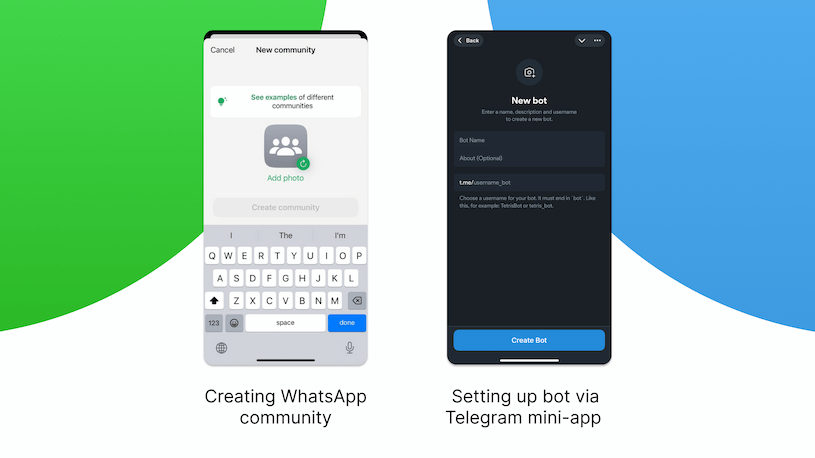
Telegram, on the other hand, appeals to users looking for a more powerful and feature-rich experience. The platform acts as a hub for communities and content, supporting supergroups with up to 200,000 members and discoverable Channels on almost any topic imaginable. Users can also use bots as digital assistants that automate tasks like setting reminders, getting news, or converting files directly within a chat. Interface customization further enhances the experience, allowing users to organize chats into folders and personalize the app's look with custom themes and backgrounds.
The bottom line is, WhatsApp is crucial if you want an easy-to-use, secure messenger to communicate with individuals you already know. Telegram is the best option for finding information, joining big communities, and accessing your conversation history from any device. Many individuals use both, enjoying the advantages of both platforms.
How to use WhatsApp and Telegram in a single app
There is no longer a need to make a choice between WhatsApp or Telegram today. With Umnico, you can connect both channels into a single app, which gives you access to the full functionality of each messaging app without inconvenient switching between them. A single interface centralizes all customer conversations, which makes it simple to manage, search, tag, and analyze interactions.
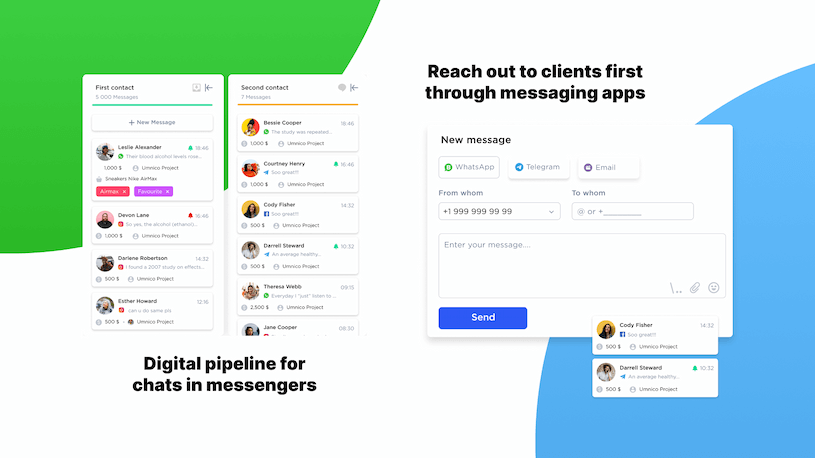
In addition, Umnico provides powerful automation and routing features, including auto-replies, triggers, and distribution rules based on SLA, tags, or queues. Teams can collaborate effectively by assigning chats, connecting multiple managers, and configuring roles and access permissions. This allows you to benefit from the strengths of both WhatsApp and Telegram in one place.
Frequently asked questions
Here are the answers to some of the frequently asked questions.
What are the disadvantages of Telegram compared to WhatsApp?
The primary drawbacks of Telegram compared to WhatsApp are its smaller user base and its approach to encryption. Because fewer people use Telegram, one may not find all their contacts on the platform. Furthermore, while Telegram offers robust security, end-to-end encryption is not enabled by default for all chats. In contrast, WhatsApp provides default end-to-end encryption for every conversation automatically.
Why do many move from WhatsApp to Telegram?
Many people are moving from WhatsApp to Telegram in search of more advanced functionality and greater control. The key benefits of Telegram include public Channels with unlimited subscribers, and unlimited cloud storage for messages and media, and powerful bot integrations.
Which is more secure, WhatsApp, Telegram, or Signal?
The Signal messenger generally offers the strongest default posture with open-source apps and end-to-end encryption for everything; WhatsApp is highly secure for personal chats with default E2EE (if you enable encrypted backups), while Telegram requires using Secret Chats for E2EE and otherwise relies on server-side encryption.
Summing things up
WhatsApp and Telegram are among the most popular messaging apps currently, and for all the good reasons. The choice between them is about which is better suited to your business strategy. WhatsApp is an ideal choice for direct sales, personalized support, and connecting with the widest possible audience. While Telegram is a go-to for brands focused on content distribution and automated engagement.
The smartest approach is to use both messaging apps. To do so effectively, like an omnichannel messaging platform such as Umnico Inbox. This way, you can manage all conversations in a single window or chat with customers directly from your CRM, track team’s performance, and leverage GPT-powered chatbots on WhatsApp, Telegram as well as 20+ other platforms. Try Umnico’s functionality for free during a trial period.
You might be interested in similar topics
How to use WhatsApp Business with multiple users

Subscribe to Umnico news!
Be the first to get recommendations and up-to-date information
